Embracing winter with sustainable heating
Recently, we inaugurated our new biofuel plant at Modum Bad. The plant is set to provide energy to approximately 10,000 square meters of the facility's buildings. - A significant leap in terms of environmental impact and operational economy, says Director of Operations and Real Estate, Arnstein Kroglund Fiskum.
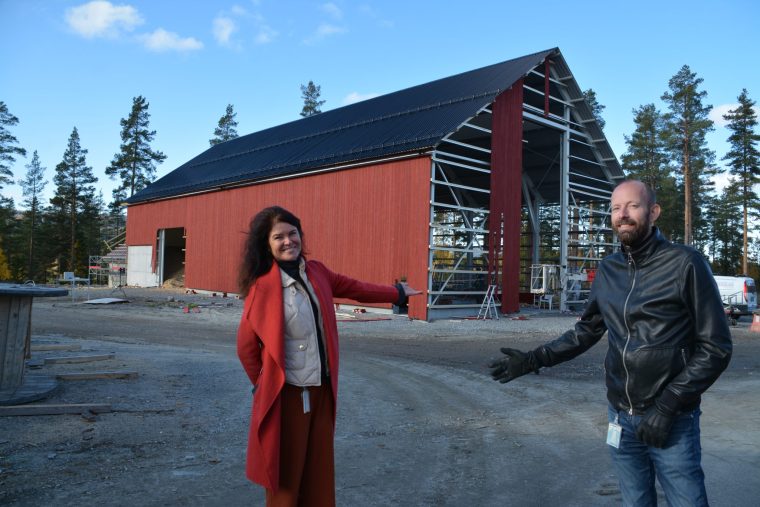
Administrerende direktør Kari-Jussie Lønning (til venstre) foran det nye biobrenselanlegget sammen med drifts- og eiendomssjef Arnstein Kroglund Fiskum.
On October 6, the new biofuel plant at Modum Bad opened its doors.
– The investment will give Modum Bad a considerable boost both environmentally and economically, says Arnstein Kroglund Fiskum, Director of Operations and Real Estate.
Energy to around ten thousand square meters
The plant features a 500-kilowatt boiler designed to supply energy to around ten thousand square meters of the facility’s buildings.
– The energy will be used for heating, ventilation, and hot water, covering approximately one million kilowatt-hours of Modum Bad’s annual energy consumption, Fiskum explains. The institutional buildings have 90 patient rooms with continuous operation year-round.
– Energy consumption is very high. Until today, this has been managed with a mix of electricity, oil, and bio-oil, resulting in high energy costs and a significant environmental footprint, he elaborates.
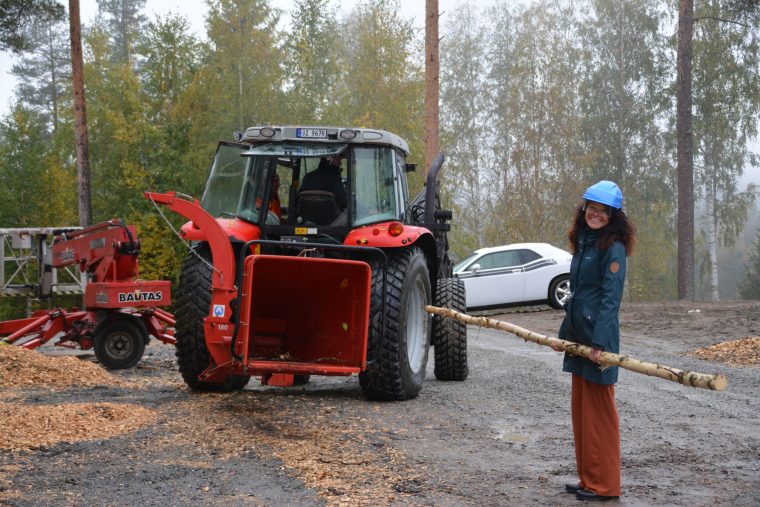
Direktør Kari-Jussie Lønning åpnet biobrenselanlegget ved å kutte opp en bjørkestamme til flis.
Potentially double
The plant is designed to potentially double its energy production to 1000 kilowatts. This allows for supplying hot water to more buildings on the site through the expansion of a district heating network. Modum Bad has around 70 heated buildings covering over 25,000 square meters spread across 150 acres.
– Modum Bad has been engaged in health-related activities for over 160 years. We have many old buildings, with 20 of them dating back to the 1800s. A large part of the clinical buildings were constructed in the 50s and 60s. Even though we work on energy efficiency measures, we will always have high energy consumption in parts of these buildings, says Fiskum.
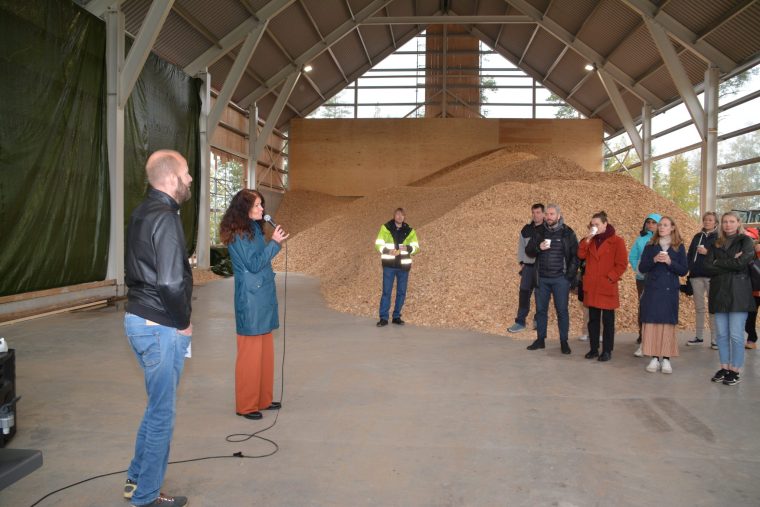
Arnstein Fiskum received thanks and congratulations from Director Lønning during the opening. In the background, we see the wood chips that will supply energy to Modum Bad’s buildings.
Self-produced wood chips
Modum Bad plans to primarily fuel the biofuel plant with self-produced wood chips. Heating through chips, pellets, or briquettes is considered an environmentally friendly energy source.
– A tree absorbs carbon dioxide as it grows. This is released back into the atmosphere when the tree rots or burns. In this way, biofuel is part of a natural cycle, says Fiskum.
Locally produced timber
The main climate impact of the plant is related to the transport of wood.
– By purchasing timber instead of chips, we reduce the need for transport. Chips have a volume 2.5 times that of timber, leading to increased transport. Furthermore, the plan is to buy locally produced timber from forestry in the neighborhood to minimize transportation. In addition, Modum Bad owns 700 acres of productive forest that will contribute significantly to the raw material needs.
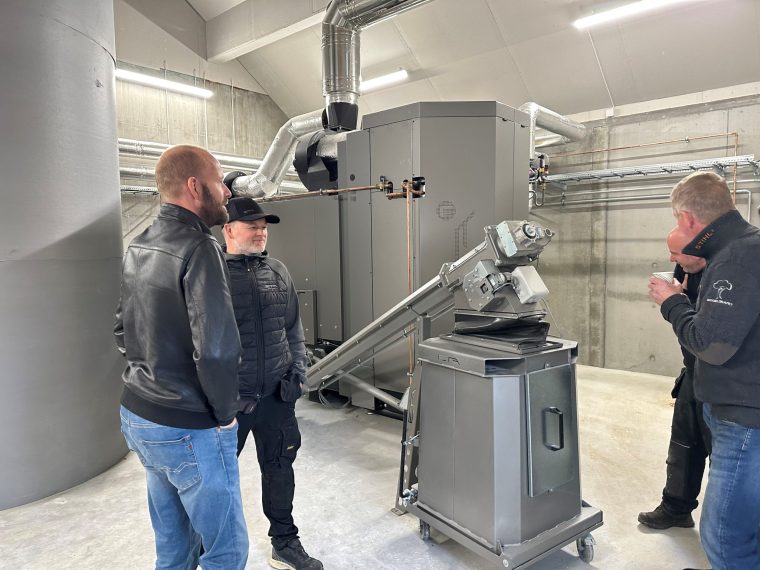
Det tekniske rommet i biobrenselanlegget.
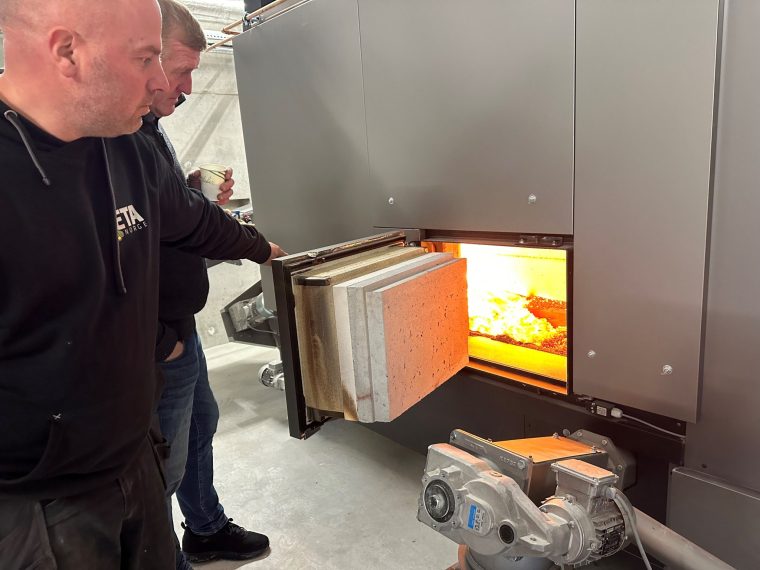
Her brenner flis som varmer opp vannet som sendes ut i rørgater til hovedbyggene våre.
– By allocating ample space for seasoning and drying the timber, we can buy wood when it is available locally. We then chip it into fuel when needed, minimizing transportation and reducing the climate footprint and costs. We are in the core area for the raw material we need, and we must take advantage of this, explains Fiskum.
– We take social responsibility
In its recently adopted strategy, Modum Bad has affirmed that we take social responsibility and incorporate UN sustainability goals into all our activities, says Managing Director Kari-Jussie Lønning.
We deliver on social sustainability through our diakonal foundation in both treatment and preventive activities. We are working to reduce our environmental footprint, along with other sustainability goals. By replacing a significant portion of the previous energy sources—electricity, oil, and bio-oil—with biofuel, we will have a significantly reduced footprint. This will contribute well to our environmental efforts, along with various other small and large initiatives, concludes Lønning.

